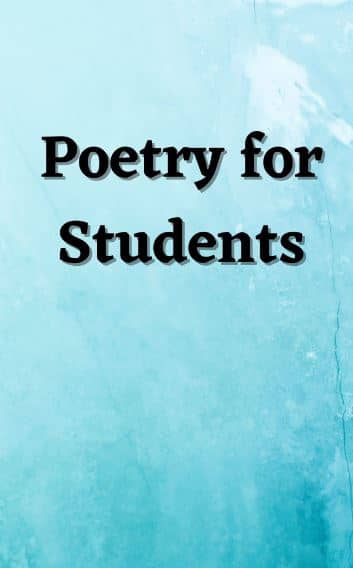‘tep By Step Process For Learning Poetry for Students’ PDF Quick download link is given at the bottom of this article. You can see the PDF demo, size of the PDF, page numbers, and direct download Free PDF of ‘Learning and teaching of poetry’ using the download button.
Step By Step Process For Learning Poetry for Students Pdf Free Download

Poetry And Their Detailed Analysis
Caedmon released an audiocassette titled Poetry & Voice of Marilyn Hacker (1984) with Hacker reading a selection of her poems.
Poem Summary
Stanza 1
In the first stanza of “The Boy,” the narrator questions who is looking out the window. “The boy in me” suggests another identity, or way of seeing, of which the narrator is becoming aware.
The gender of the narrator is not clear at this point. What is clear is the assumption that one’s gender influences the way that one sees the world, and the things to which one pays attention.
Stanza 2
In this stanza, the narrator continues questioning the gender of the boy inside her, wondering if he would have responded differently to his taunters “if he were a girl.”
The last line alerts readers to the fact that the narrator is in the process of composing a piece of writing, possibly a school exercise on a fairy tale or book about World War II.
Stanza 3
The poem becomes more transparently self-reflexive in this stanza. That is, the boy mentioned in the opening stanza is now the one crossing out words in the second.
The “homework” he is doing includes writing the words, “the rain, the linenmender,” which refer to the images in the first stanza.
The last sentence runs over into the next stanza and explicitly states what the previous stanzas have illustrated: the boy’s dawning awareness of what it means to be a boy.
“The absence . . . of gender” refers to the way that the young boy is not aware of himself as a boy, and “the privilege of gender” refers to the ways in which boys, as opposed to girls, often do not have to think of themselves as boys but are nonetheless socially rewarded for simply being male.
I have often thought that poets have the easiest job in the world. A poem, after all, is just a few lines on a page, usually not even extending the margin to margin. How long would that take to write, about five minutes?
Maybe ten at the most, if you wanted it to rhyme or have a repeating meter. Why I could start in the morning and produce a book of poetry by dinnertime? But we all know that it isn’t that easy.
Anyone can come up with enough words, but the poet’s job is about writing the right ones. The right words will change lives, making people see the world somewhat differently than they saw it just a few minutes earlier.
The right words can make a reader who relies on the dictionary for meanings take greater responsibility for his or her own personal understanding.
A poem that is put on the page correctly can bear any amount of analysis, probing, defining, explaining, and interrogating, and something about it will still feel new the next time you read it.
It would be fine with me if I could talk about poetry without using the word “magical,” because that word is overused these days to imply “a really good time,” often with a certain sweetness about it and a lot of poetry is neither of these.
But if you stop and think about magic whether it brings to mind sorcery or witchcraft. or bunnies pulled from top hats it always seems to involve stretching reality to produce a result greater than the sum of its parts and pulling unexpected results out of thin air.
This book provides ample cases where a few simple words conjure up whole worlds.
Topics for Practice Poems
• As a class, construct a timeline of events concerning the plight of Jews in Europe in 1942 and post it in class. Could something like the Holocaust ever happen again? Discuss your answers as a class.
In groups, collect ads from the personals section of your local newspaper or from an online site such as Yahoo.
Analyze the language men use to describe themselves and what they want in a partner. Then, analyze the language women use to describe themselves and what they want in a partner.
Make a chart outlining the similarities and differences in both self-representation and representation of the desired partner.
What does your analysis tell you about how men and women see themselves? What gender stereotypes do the ads illustrate?
| Writer | David Galens |
| Language | English |
| Pages | 377 |
| Pdf Size | 3.22 MB |
| Category | Poetry |
Related PDFs
- Best Poetry Collection PDF
- William Shakespeare Poems PDF
- Indo-European Poetry And Myth PDF by M.L West
- Best Contemporary Poetry For Youth PDF
- 100+ The World’s Best Poetry PDF
- Hafiz And The Religion of Love In Classical Persian Poetry PDF
Poetry for Practice For Students Book PDF Free Download
